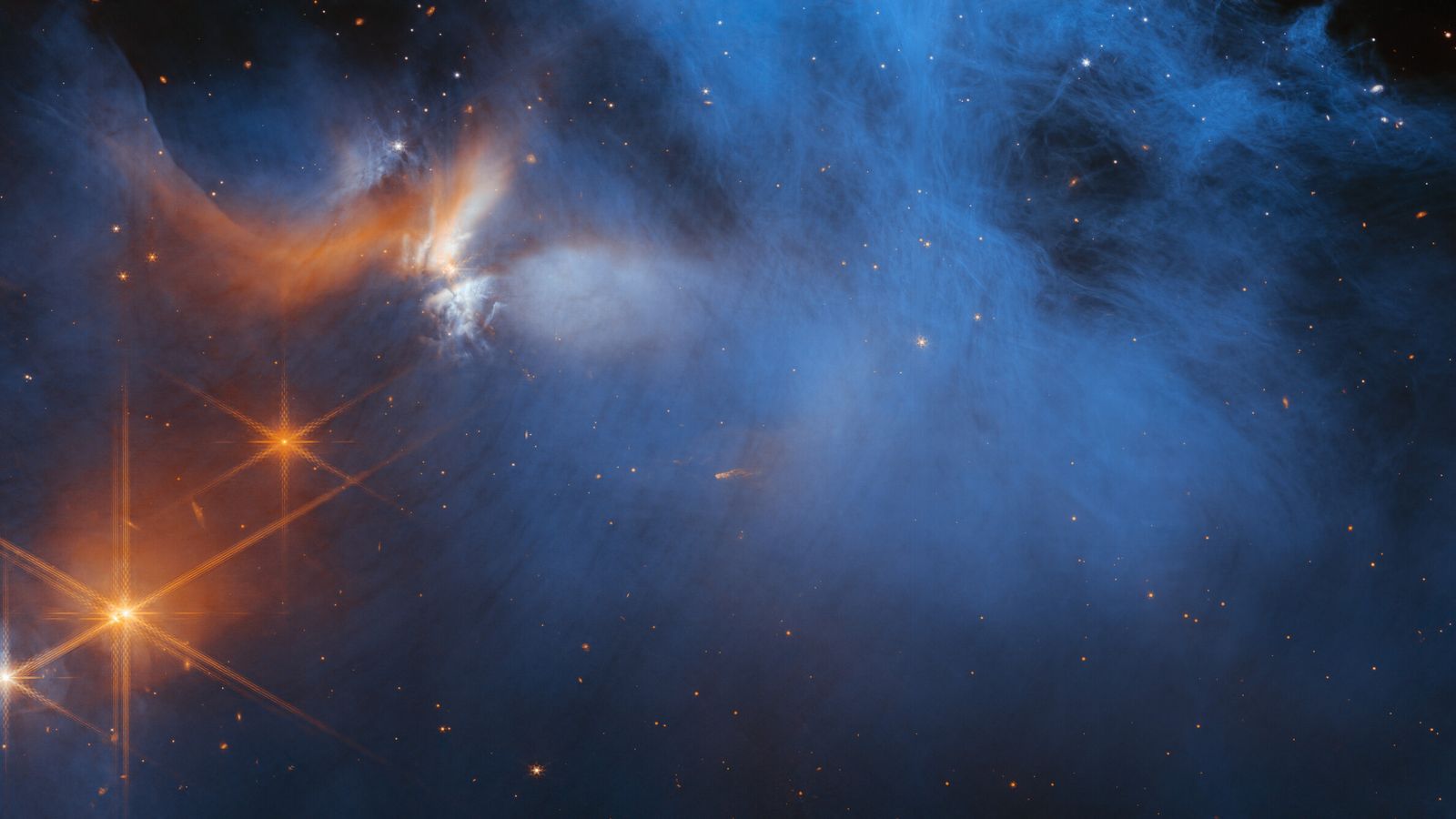NASA's James Webb Space Telescope finds signs of 'building blocks for life' in icy clouds
Molecular species that form the "building blocks for life" have been found in a deep space region of icy clouds.

Using NASA's James Webb Space Telescope, a team of astronomers and scientists confirmed the presence of methane and ethanol, as well as small compounds with nitrogen and sulphur.
On Earth, sources of methane include emissions from wetlands, oceans, landfills and raising cattle, while most ethanol comes from fermenting starches and sugars.
They were discovered some 500 light years from Earth, in a region where temperatures range from -270C to -250C that had never before been observed.
The international team spent 30 hours observing two areas in the dense and difficult-to-investigate Chameleon I molecular cloud, where dozens of young stars are forming.
NASA's powerful telescope sent back detailed images and data, from which the so-called Ice Age scientists could identify molecules.
The image at the top of this article shows the central region of Chameleon I, with the cold, wispy cloud in blue, illuminated by the glow of a young star (seen in orange).
It's the light from that star and others in the background that are used to detect ices in the cloud, which absorb the starlight passing through them.
"This is exciting for two reasons," Professor Martin McCoustra, an astrochemist, said.
"One is that it makes us more confident in the conditions we're recreating in our laboratories.
"The second is that these molecules are the materials from which the building blocks for life are made.
"We are increasingly certain that many of the components of the organic soup from which life evolved had an extra-terrestrial origin and were generated as a natural part of the process of forming the sun and solar system."
The Pillars of Creation are set off in a kaleidoscope of color in NASA’s James Webb Space Telescope’s near-infrared-light view. The pillars look like arches and spires rising out of a desert landscape, but are filled with semi-transparent gas and dust, and ever changing. This is a region where young stars are forming – or have barely burst from their dusty cocoons as they continue to form.
Space's 'inhospitable environments'
The telescope was used as part of a programme through which it is granted to scientific projects to aid their research.
It is hoped that the Ice Age team will be able to use it again for further observations of these icy regions of space.
Professor McCoustra, of Heriot-Watt University in Edinburgh, said the telescope was key to discovering more about space's most "inhospitable environments".
"To see the icy dust grains in space, you need to use a star as a source of light to shine through and illuminate them," he said.
"It's the same as we do in the laboratory, of course on a much grander scale."
He added: "We're confirming that what we see and recreate in our laboratories is what happens in space.
"This makes us more confident that chemistry in icy environments is the main pathway to forming the chemical precursors to life found in the primordial chemical soup."
Ice Age's findings have been reported in the Nature Astronomy journal.
-sky news







